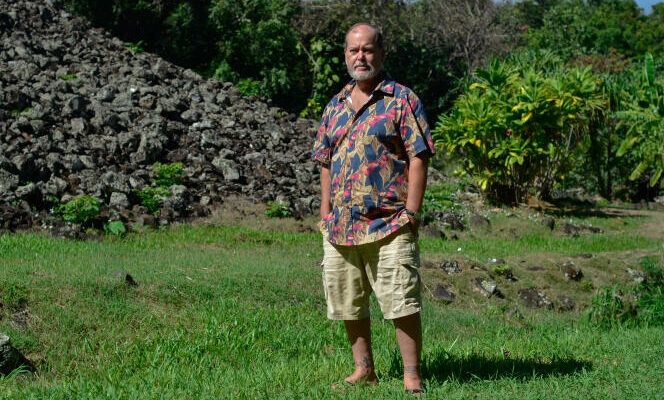Patrick Vinton Kirch walks alongside an impressive stack of volcanic rocks in Kailua, on the island of Oahu. Several centuries ago, it was the base of a temple, the heiau Ulupo. In the adjacent plain, farmers raised fish in ponds, cultivated taro – a tuberculous plant at the heart of their diet – and gardened sweet potatoes, bananas and sugar cane. “This heiau has never been excavated”, points out Mr. Kirch. Once inhabited by hundreds of thousands of inhabitants, perhaps nearly a million, the Hawaiian archipelago still conceals many secrets.
And yet, if anyone has helped to elucidate the mysteries of Hawaii in recent decades, it is this archaeologist, a major figure in Pacific anthropology, prolific author and member of the prestigious National Academy of Sciences of the United States. United. Wandering with an irregular gait, Mr. Kirch, 73, is still adjusting to his new knee prosthesis. “I spent many hours digging in the bottom of the holes; Here is the result “, explains this Honolulu native. On his ankles, tattoos bear witness to his stays in the Polynesian islands.
Mr. Kirch’s scientific contributions are numerous. His long-term work on the settlement of the Pacific has made it possible to date the progression of the great explorers of the Lapita culture (between 1,500 and 500 BC) and their successors, the Polynesians, who landed on the Hawaiian archipelago around the year 1000 AD. And then, by adhering to the scientific principles of “new archaeology” developed at the turn of the 1960s, it deciphered the agricultural, political and religious structures of these islands; complex societies, which reached their climax in Hawaii at the time of the arrival of James Cook in 1778. “I consider myself a historical anthropologist”he says.
Exceptional synthesis capacity
The scientist – for a long time a professor at Berkeley and, since 2019, at the University of Hawaii – is also passionate about the interactions between human societies and their environment. One of his most recent projects, in the Halawa Valley on the Hawaiian island of Molokai, involves understanding whether the highly productive flooded taro crop is compromising the nutrient content of soils. Was this agricultural practice, now folkloric, perfectly sustainable? The team of researchers is still developing its answer to this question, which echoes our current ecological concerns.
You have 70% of this article left to read. The rest is reserved for subscribers.
